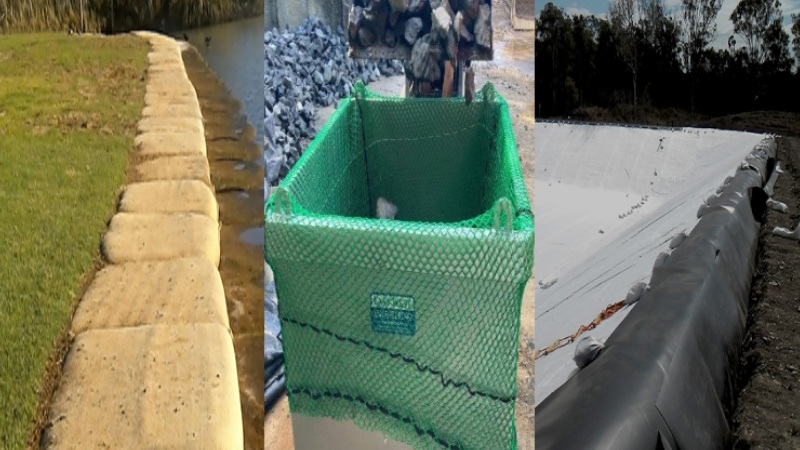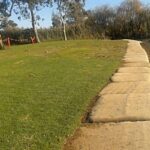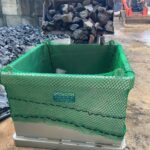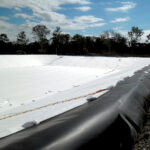Coastal environments are highly predisposed to erosion due to the continuous tidal and wave forces that gradually wear away shorelines and riverbanks. Additionally, throughout Australia, coastal locations are at risk of increasingly severe erosion due to climate change and rising sea levels.
These challenging environments demand special geosynthetic solutions to help prevent erosion, stabilise shorelines and protect against surges and swells during storm events.
In many coastal environments, geosynthetics can provide robust and reliable long-term protection against issues such as scour, corrosion, mechanical erosion, dune erosion, as well as providing stability and protection during emergency works following storms and tropical cyclones.
The Role of Geosynthetics in Protecting Shorelines
With Australia boasting over 35,000 kilometres of coastline and countless rivers and estuarine environments, wind and wave erosion is prevalent across the country. Allowing nature to simply take its course can cause extensive damage to native ecosystems and riparian zones as well as eventually undermine coastal infrastructure and housing, especially in areas made up of unconsolidated sediments such as beaches, dunes and sandstone cliffs.
Repairing coastal damage can be difficult and time-consuming, and unless it is done properly there is a high probability of future scouring. Geosynthetic solutions have long been used in hydraulic engineering applications, and Polyfabrics coastal solutions have been successfully used in the repair and protection of many types of shorelines.
From creating wave breaks using geosynthetic rock containers to dissipate water energy to using geotextile sandbags for repairing beach scour, geosynthetics provide simple, flexible and relatively inexpensive solutions to large-scale coastal erosion issues.
Types of Geotextiles used in Coastal Erosion Repair
Geotextile Sand Bags
SoftRock Geotextile Sand Bags are sand-filled containers manufactured from geotextiles and used for coastal structures, dune security and scour protection. An alternative to conventional rock materials or concrete, they create a strong and rigid defence against further erosion.
These oversized bags can be easily filled on site with sand creating a simple and aesthetic treatment for erosion-prone areas. They are UV and abrasion resistant and available in two sizes – 0.75 or 2.5 cubic metres. SoftRock bags are also used for flood control, river training and embankment works.
EROmasta FastRock Flexible Rope Gabions
Flexible rope net gabions are made from polyester yarn, HDPE or other suitable polymers. The EROmasta FastRock product consists of netting and polymer ropes which are fabricated together in a controlled environment, creating an extremely strong net bag that can be filled with >50mm aggregate.
These flexible rope net gabions are typically installed along river banks and streams to control erosion and encourage vegetation to grow and integrate into the environment. The gabions come in 2T or 4T options, complete with a strong lifting ring with SWL test certificates, allowing installation teams to safely lift the rock-filled bags and place them in the desired location.
TerraTex® (PP) Non-Woven Geotextiles
The hydraulic and filtration properties of TerraTex® standard geotextiles make them highly effective in replacing traditional filter layers in coastal and waterway engineering applications.
The TerraTex product provides an effective way to construct a stable granular layer over soft foundation soils. When stone is placed directly on a soft subgrade, the imposed load often causes intermixing of two layers. This results in contamination of the stone layer and a resulting loss in bearing strength.
With the use of TerraTex, a single layer of geotextile can replace a succession of stone filter layers. A single bedding layer of stone is laid on the geotextile and this is followed by the rock armour.
Need help choosing the right product? Contact the team for the right solution to your coastal erosion problem.




